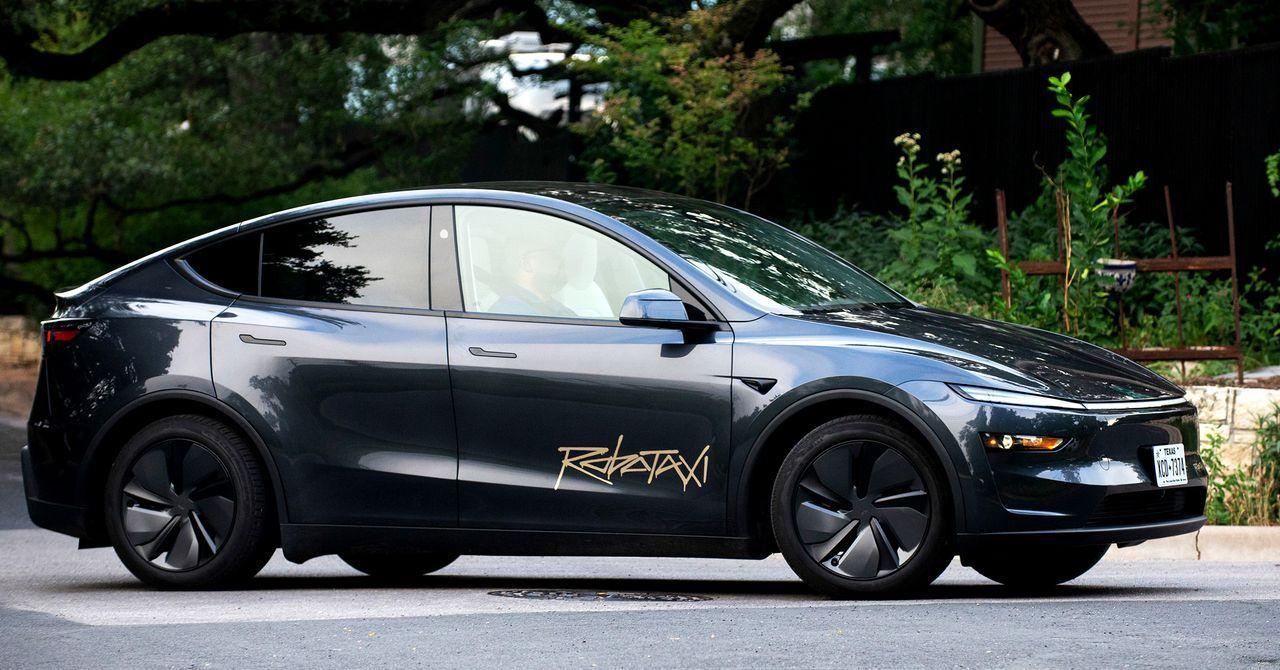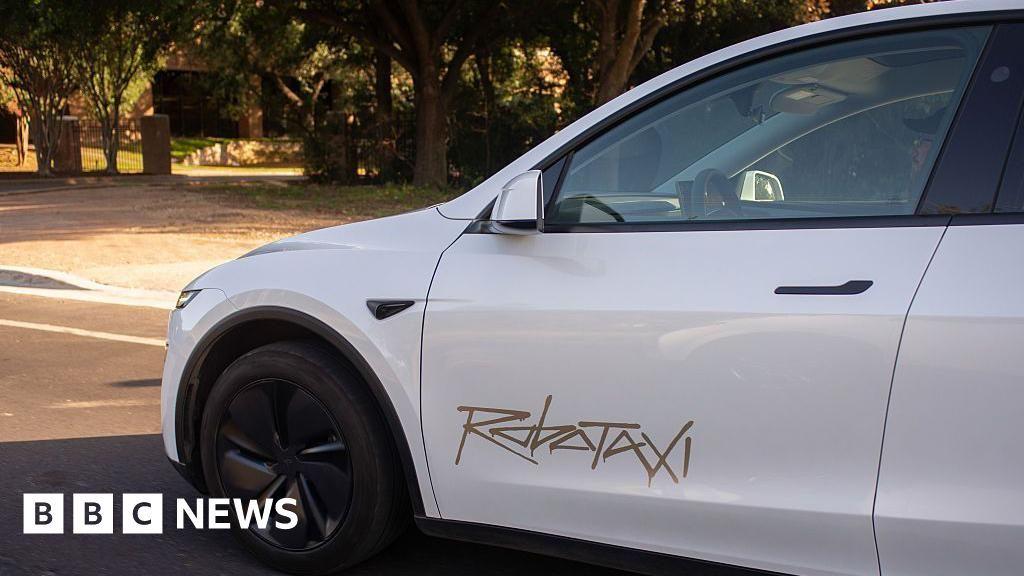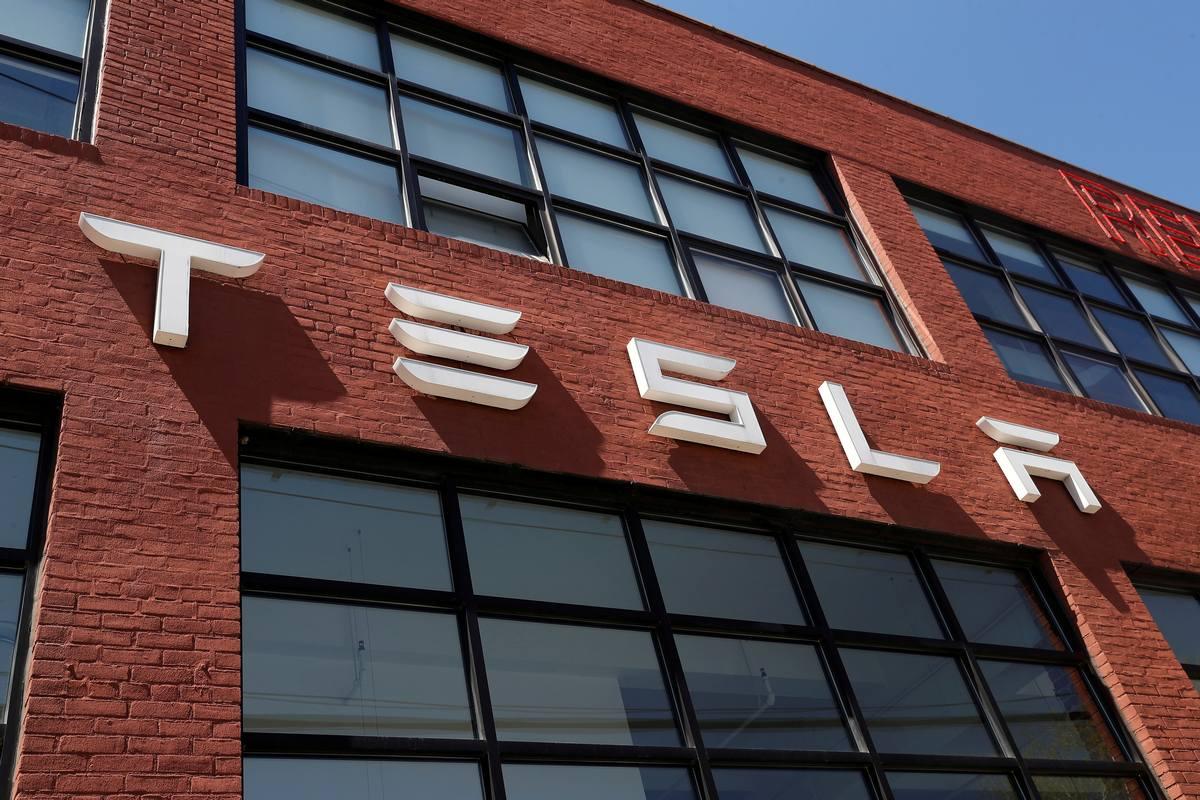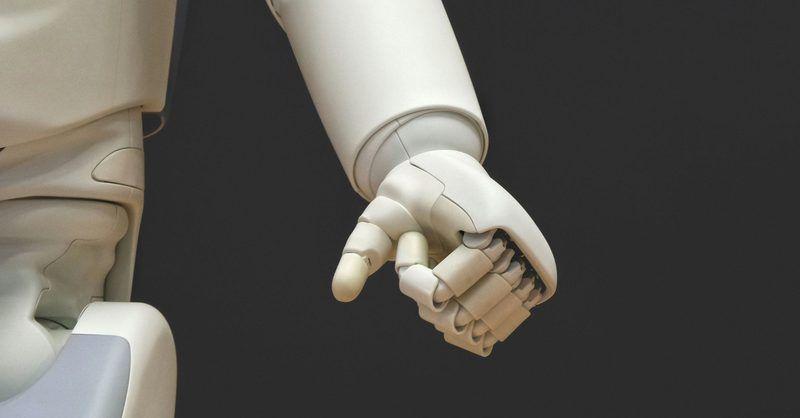Tesla's Ambitious Robotaxi Plans: Promises and Challenges for 2025 Launch
5 Sources
5 Sources
[1]
Will Paid Robotaxis Be a Reality in 2025?
Paid robotaxis have generated much speculation and excitement due to Tesla's recent plans. Elon Musk's ambitious goal is to launch a fully autonomous ride-hailing service in 2025. However, this idea is quite challenging. This article examines the current state of Tesla's robotaxi plans. We will also explore the technological requirements and the regulatory hurdles that may pose challenges along the way. Musk unveiled Tesla's "Cybercab," a two-seater car that does not need a steering wheel or pedals and instead would rely on sophisticated artificial intelligence and cameras to navigate through roads. Tesla will, according to Musk, roll out paid rides in California and Texas next year depending on regulatory approvals. The company has been testing its robotaxi service internally in the Bay Area, where employees could summon autonomous vehicles using a prototype app. This would be an important internal testing process because it would allow the company to gather invaluable data on the operational capabilities of the Cybercab before its public deployment. An interesting fact is that Musk is pretty confident about the Full Self-Driving (FSD) software in Tesla. He claims that it will eventually be much safer than a human driver by mid-2025. It depends on how all regulatory hurdles are crossed, especially in California, where quite stringent regulations have been laid down for the working of autonomous vehicles.
[2]
Tesla promises paid robotaxis next year, but significant hurdles remain
Tesla CEO Elon Musk on Wednesday said the electric vehicle maker will roll out driverless ride-hailing services to the public in California and Texas next year, a claim likely to face significant regulatory and technical challenges. "We think that we'll be able to have driverless Teslas doing paid rides next year," Musk said on Tesla's quarterly earnings call. He said Tesla currently offers an app-based ride-hailing service to employees in the San Francisco Bay Area. His statement doubled down and expanded on a pledge he made at Tesla's robotaxi unveiling two weeks ago, where he said he expected to roll out "unsupervised" self-driving in certain Tesla vehicles in 2025. The lack of a business plan around the robotaxi at that event sent its stock plunging. On Wednesday, however, Tesla won back some investor confidence by forecasting a jump in vehicle sales next year. In California, in particular, the company will face an uphill climb in securing the needed permits to offer fully autonomous rides to paying customers. Alphabet's Waymo, which offers paid rides in autonomous vehicles in the Bay Area and Los Angeles, as well as in Phoenix, Arizona, spent years logging millions of miles of testing before it received its first permit from the California Public Utilities Commission (CPUC), which regulates ride-hailing services. The California Department of Motor Vehicles, which regulates testing and deployment of autonomous vehicles in the state, told Reuters that Tesla last reported using its autonomous vehicle testing permit in 2019. That permit requires a safety driver. The company does not have, and has not applied for, a testing permit without a driver, the agency said. Tesla did not respond to a request for comment. As for the ride-hailing service in the Bay Area for employees, CPUC said Tesla does not need a permit, because employees are not considered passengers. At Tesla's robotaxi event on Oct 10, Musk unveiled a two-seater, two-door "Cybercab" without a steering wheel and pedals that would use cameras and artificial intelligence to navigate roads. On Wednesday, he acknowledged the potential difficulties in California, saying "it's not something we totally control," but adding "I would be shocked if we don't get approval next year." Ross Gerber, a Tesla shareholder and CEO of Gerber Kawasaki Wealth and Investment Management, said "dealing with regulators is a very difficult process" and that no one should consider it "a walk in the park." Texas has far fewer regulatory requirements for autonomous vehicles than California, but companies often test for months or years before deploying paid services. Rules around deployment of autonomous vehicles are largely left to individual states. Musk on the call said there should be a "national approval process for autonomy." Tesla's advanced driver assistance system, called Full Self-Driving (FSD), which is the bedrock for Tesla's robotaxi ambitions, has faced questions from regulators. Last week, the U.S. National Highway Traffic Safety Administration (NHTSA) opened an investigation into 2.4 million Tesla vehicles equipped with FSD after four reported collisions, including a 2023 fatal crash. Still, the idea of Tesla rolling out a robotaxi fleet sent shares of ride-hailing apps Uber and Lyft down 2.3% in post-market trading.
[3]
Tesla promises paid robotaxis next year, but significant hurdles remain
(Reuters) - Tesla CEO Elon Musk on Wednesday said the electric vehicle maker will roll out driverless ride-hailing services to the public in California and Texas next year, a bold claim likely to face significant regulatory and technical challenges. "We think that we'll be able to have driverless Teslas doing paid rides next year," Musk said on Tesla's quarterly earnings call. He said Tesla currently offers an app-based ride-hailing service to employees in the San Francisco Bay Area. His statement doubled down and expanded on a pledge he made at Tesla's robotaxi unveiling two weeks ago, where he said he expected to roll out "unsupervised" self-driving in certain Tesla vehicles in 2025. The lack of a business plan around the robotaxi at that event sent its stock plunging. On Wednesday, however, Tesla won back some investor confidence by forecasting a jump in vehicle sales next year. In California, in particular, the company will face an uphill climb in securing the needed permits to offer fully autonomous rides to paying customers. Alphabet's Waymo, which offers paid rides in autonomous vehicles in the Bay Area and Los Angeles, as well as in Phoenix, Arizona, spent years logging millions of miles of testing before it received its first permit from the California Public Utilities Commission (CPUC), which regulates ride-hailing services. The California Department of Motor Vehicles, which regulates testing and deployment of autonomous vehicles in the state, told Reuters that Tesla last reported using its autonomous vehicle testing permit in 2019. That permit requires a safety driver. The company does not have, and has not applied for, a testing permit without a driver, the agency said. Tesla did not respond to a request for comment. As for the ride-hailing service in the Bay Area for employees, CPUC said Tesla does not need a permit, because employees are not considered passengers. At Tesla's robotaxi event on Oct 10, Musk unveiled a two-seater, two-door "Cybercab" without a steering wheel and pedals that would use cameras and artificial intelligence to navigate roads. On Wednesday, he acknowledged the potential difficulties in California, saying "it's not something we totally control," but adding "I would be shocked if we don't get approval next year." Texas has far fewer regulatory requirements for autonomous vehicles than California, but companies often test for months or years before deploying paid services. Tesla's advanced driver assistance system, called Full Self-Driving (FSD), which is the bedrock for Tesla's robotaxi ambitions, has faced questions from regulators. Last week, the U.S. National Highway Traffic Safety Administration (NHTSA) opened an investigation into 2.4 million Tesla vehicles equipped with FSD after four reported collisions, including a 2023 fatal crash. Still, the idea of Tesla rolling out a robotaxi fleet sent shares of ride-hailing apps down 2.3% in post-market trading. (Reporting by Chris Kirkham; Editing by Sayantani Ghosh and Christopher Cushing)
[4]
Tesla Promises Paid Robotaxis Next Year, but Significant Hurdles Remain
(Reuters) - Tesla CEO Elon Musk on Wednesday said the electric vehicle maker will roll out driverless ride-hailing services to the public in California and Texas next year, a bold claim likely to face significant regulatory and technical challenges. "We think that we'll be able to have driverless Teslas doing paid rides next year," Musk said on Tesla's quarterly earnings call. He said Tesla currently offers an app-based ride-hailing service to employees in the San Francisco Bay Area. His statement doubled down and expanded on a pledge he made at Tesla's robotaxi unveiling two weeks ago, where he said he expected to roll out "unsupervised" self-driving in certain Tesla vehicles in 2025. The lack of a business plan around the robotaxi at that event sent its stock plunging. On Wednesday, however, Tesla won back some investor confidence by forecasting a jump in vehicle sales next year. In California, in particular, the company will face an uphill climb in securing the needed permits to offer fully autonomous rides to paying customers. Alphabet's Waymo, which offers paid rides in autonomous vehicles in the Bay Area and Los Angeles, as well as in Phoenix, Arizona, spent years logging millions of miles of testing before it received its first permit from the California Public Utilities Commission (CPUC), which regulates ride-hailing services. The California Department of Motor Vehicles, which regulates testing and deployment of autonomous vehicles in the state, told Reuters that Tesla last reported using its autonomous vehicle testing permit in 2019. That permit requires a safety driver. The company does not have, and has not applied for, a testing permit without a driver, the agency said. Tesla did not respond to a request for comment. As for the ride-hailing service in the Bay Area for employees, CPUC said Tesla does not need a permit, because employees are not considered passengers. At Tesla's robotaxi event on Oct 10, Musk unveiled a two-seater, two-door "Cybercab" without a steering wheel and pedals that would use cameras and artificial intelligence to navigate roads. On Wednesday, he acknowledged the potential difficulties in California, saying "it's not something we totally control," but adding "I would be shocked if we don't get approval next year." Texas has far fewer regulatory requirements for autonomous vehicles than California, but companies often test for months or years before deploying paid services. Tesla's advanced driver assistance system, called Full Self-Driving (FSD), which is the bedrock for Tesla's robotaxi ambitions, has faced questions from regulators. Last week, the U.S. National Highway Traffic Safety Administration (NHTSA) opened an investigation into 2.4 million Tesla vehicles equipped with FSD after four reported collisions, including a 2023 fatal crash. Still, the idea of Tesla rolling out a robotaxi fleet sent shares of ride-hailing apps down 2.3% in post-market trading. (Reporting by Chris Kirkham; Editing by Sayantani Ghosh and Christopher Cushing)
[5]
Tesla's Robotaxis Could Arrive on Texas and California Roads by 2025
The general public may hail a Tesla self-driving robotaxi as early as 2025 - and employees are already testing it out on some San Francisco Bay Area roads. On an earnings call on Wednesday, CEO Elon Musk said the company plans to launch its self-driving robotaxis in Texas and California next year. The timeline is contingent upon regulatory approval, but Musk said on the call that he thinks the company will receive that approval by next year. He previously said the taxi, dubbed the Cybercab, would enter production as early as 2026. Tesla is already testing the robotaxi service among employees in the Bay Area, Musk said. With the developer app, employees can hail a robotaxi that will take them anywhere within the region. Musk also said a human driver is on board for those rides who can step in case there are issues, but eventually that will no longer be the case. Read more: Elon Musk Unveils the Long-Awaited Robotaxi and Tesla's Autonomous Future Musk's remarks come nearly two weeks after the company held a splashy but strange press event at Warner Bros. Studios in Los Angeles, where it unveiled the Cybercab alongside 6-foot tall semi-autonomous humanoid robots. The autonomous vehicle, which was available for test rides, was shown in a silver-chrome hue and featured no steering wheel or pedals. It charges via induction and uses AI to navigate roads. Musk said the car will cost "below $30,000." Musk and Tesla have long touted what the company calls full self-driving with software that helps a vehicle change lanes, park and navigate roads. Still, the company has said drivers need to remain alert and behind the wheel even with the feature activated. Tesla's robotaxis are expected to be much safer than ones with human drivers, according to Musk, who sees this as a profound shift in Tesla's identity. "It will be very exciting," he said. "It's really a profound change. Tesla becomes more than a sort of vehicle and battery company at that point." He believes the approval process is expected to take longer in California than Texas, and the Cybercab may come to more states soon after. The self-driving industry continues to advance with key players like Alphabet's Waymo operating in cities such as San Francisco, Phoenix and Los Angeles, and Amazon's Zoox conducting robotaxi testing in California and Las Vegas. GM's Cruise, which faced suspension after an accident, has resumed manual and supervised operations in select cities.
Share
Share
Copy Link
Tesla CEO Elon Musk announces plans to launch driverless robotaxis in California and Texas by 2025, facing regulatory hurdles and technical challenges.

Tesla's Bold Vision for Autonomous Ride-Hailing
Elon Musk, CEO of Tesla, has announced ambitious plans to launch driverless robotaxis in California and Texas by 2025. This move represents a significant step towards Tesla's vision of autonomous transportation, with Musk claiming, "We think that we'll be able to have driverless Teslas doing paid rides next year"
2
3
4
.The Cybercab: Tesla's Autonomous Vehicle
At the heart of Tesla's robotaxi plans is the "Cybercab," a two-seater, two-door vehicle unveiled at a recent event. This futuristic vehicle lacks a steering wheel and pedals, relying instead on sophisticated artificial intelligence and cameras for navigation
1
2
. Musk projects that the Cybercab will cost "below $30,000" and will charge via induction5
.Current Testing and Development
Tesla is already testing its robotaxi service internally in the San Francisco Bay Area. Employees can summon autonomous vehicles using a prototype app, allowing the company to gather valuable data on the Cybercab's operational capabilities
1
2
. However, these test rides currently include a human driver who can intervene if necessary5
.Regulatory Challenges
The rollout of Tesla's robotaxi service faces significant regulatory hurdles, particularly in California. The California Department of Motor Vehicles reported that Tesla last used its autonomous vehicle testing permit in 2019, which required a safety driver. Currently, Tesla has not applied for a permit to test vehicles without a driver
2
3
4
.In contrast to Tesla's ambitious timeline, companies like Alphabet's Waymo spent years logging millions of miles of testing before receiving their first permit from the California Public Utilities Commission
2
3
4
.Technical Challenges and Safety Concerns
Tesla's Full Self-Driving (FSD) software, which underpins its robotaxi ambitions, has faced scrutiny from regulators. Recently, the U.S. National Highway Traffic Safety Administration (NHTSA) opened an investigation into 2.4 million Tesla vehicles equipped with FSD after four reported collisions, including a fatal crash in 2023
2
3
4
.Despite these concerns, Musk remains confident about the safety of Tesla's autonomous technology, claiming that it will eventually be "much safer than a human driver by mid-2025"
1
.Related Stories
Market Impact and Competition
The announcement of Tesla's robotaxi plans has already impacted the ride-hailing market, with shares of companies like Uber and Lyft dropping 2.3% in post-market trading
2
3
. This highlights the potential disruption that successful implementation of robotaxis could bring to the transportation industry.Tesla's entry into the autonomous ride-hailing market puts it in competition with established players like Waymo, which already offers paid rides in autonomous vehicles in several U.S. cities, and emerging competitors like Amazon's Zoox
5
.The Road Ahead
While Tesla's plans are ambitious, the path to widespread robotaxi deployment is fraught with challenges. Regulatory approval, particularly in California, remains a significant hurdle. Musk acknowledged this, stating, "It's not something we totally control," but expressed confidence in obtaining approval by next year
2
3
4
.As Tesla moves forward with its robotaxi plans, the company is poised to transform from a vehicle and battery company into a key player in the autonomous transportation revolution. The success of this venture could significantly impact the future of urban mobility and Tesla's position in the automotive industry.
References
Summarized by
Navi
[1]
[3]
Related Stories
Recent Highlights
1
Nvidia locks in $20 billion Groq deal, securing AI chip rival's technology and talent
Business and Economy

2
Chinese AI Models Close Gap With US Systems as Open-Source Strategy Reshapes Global Tech Order
Policy and Regulation

3
Doctors warn AI companions threaten mental health as kids turn to chatbots for friendship
Health







